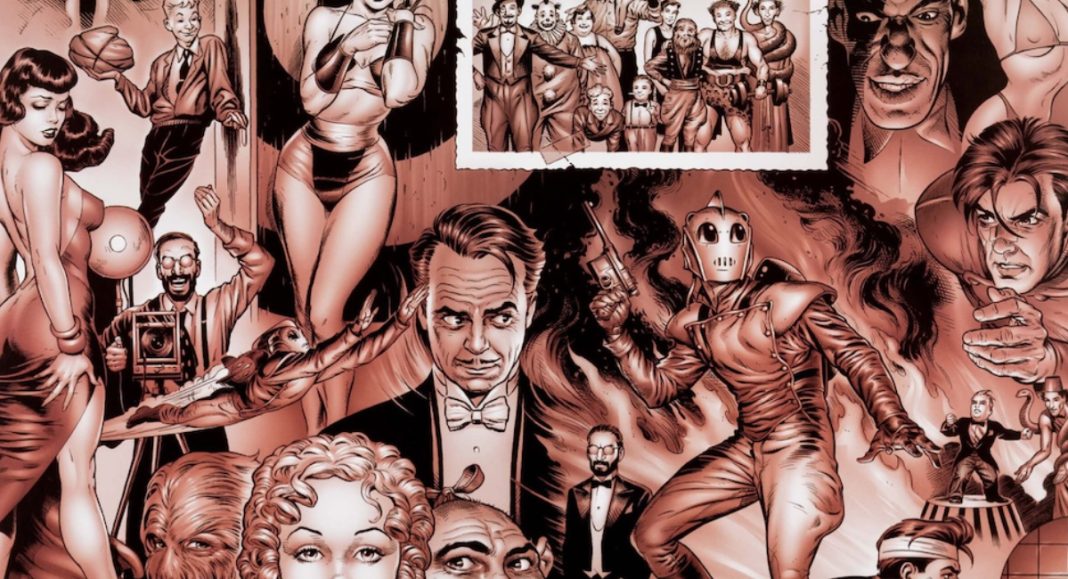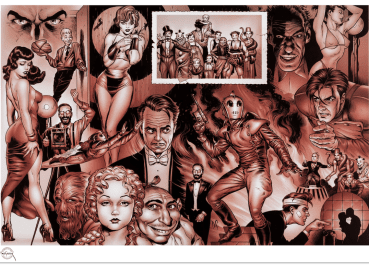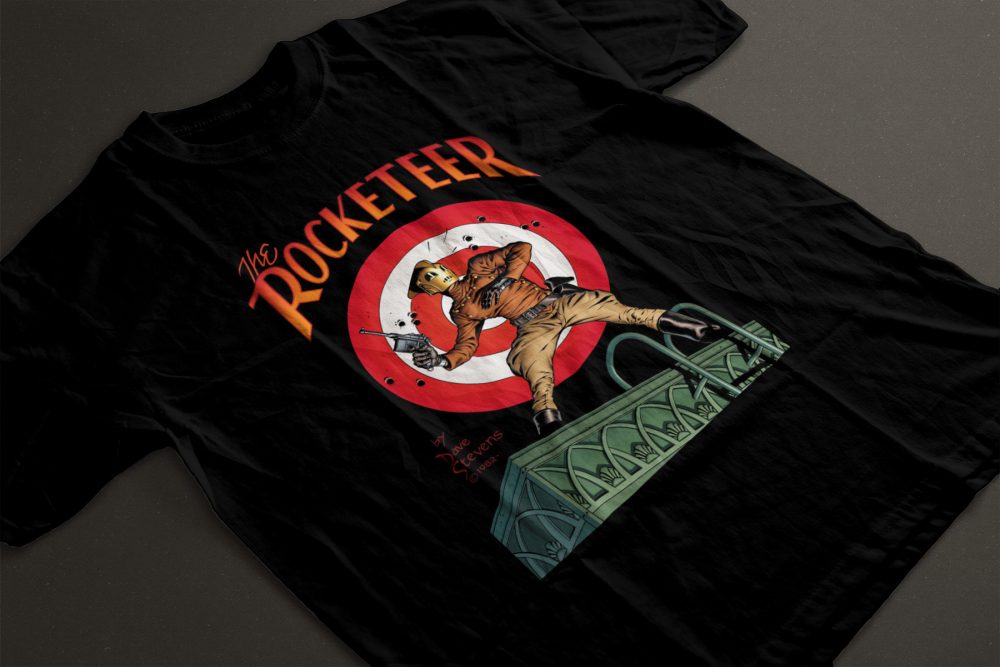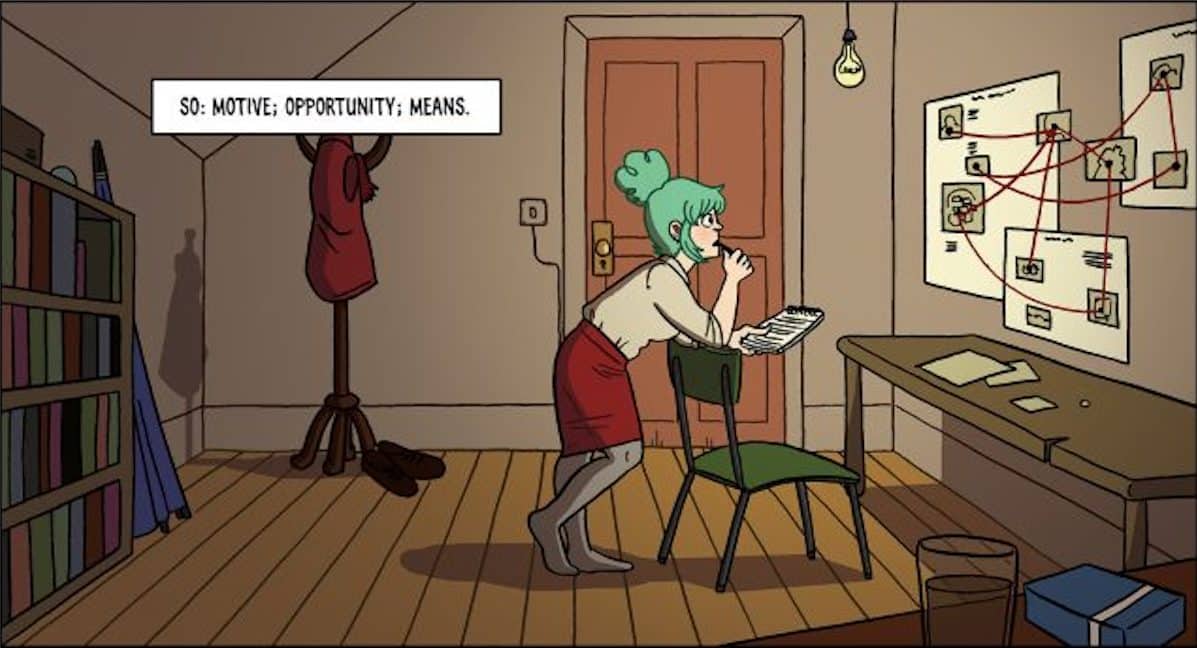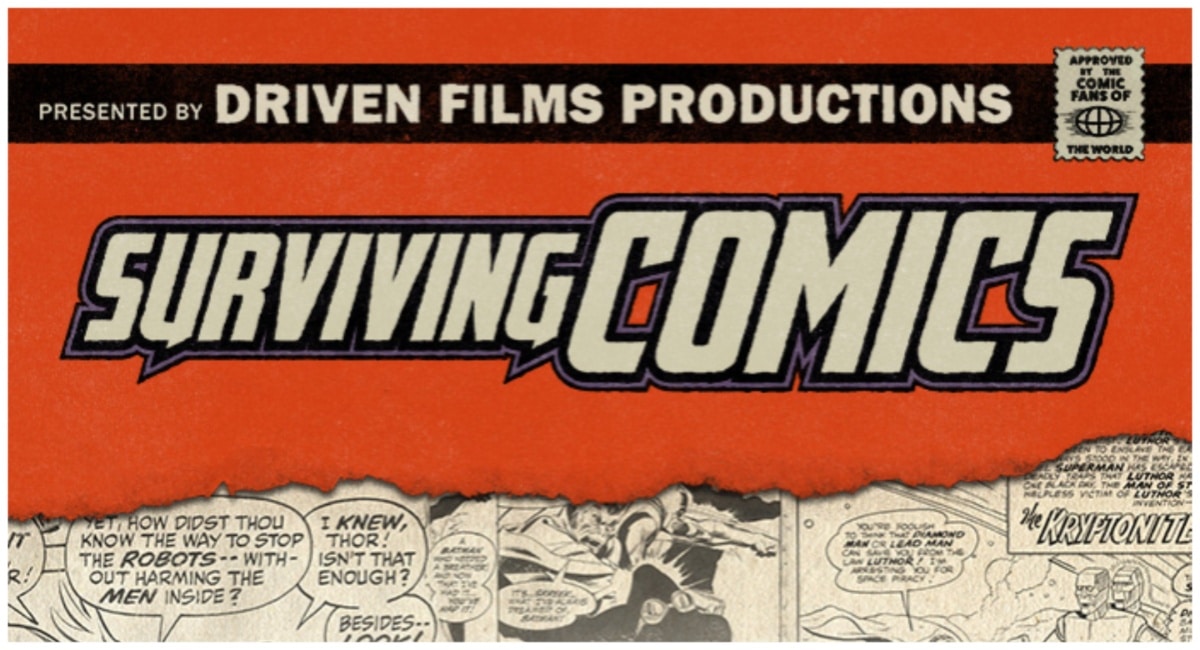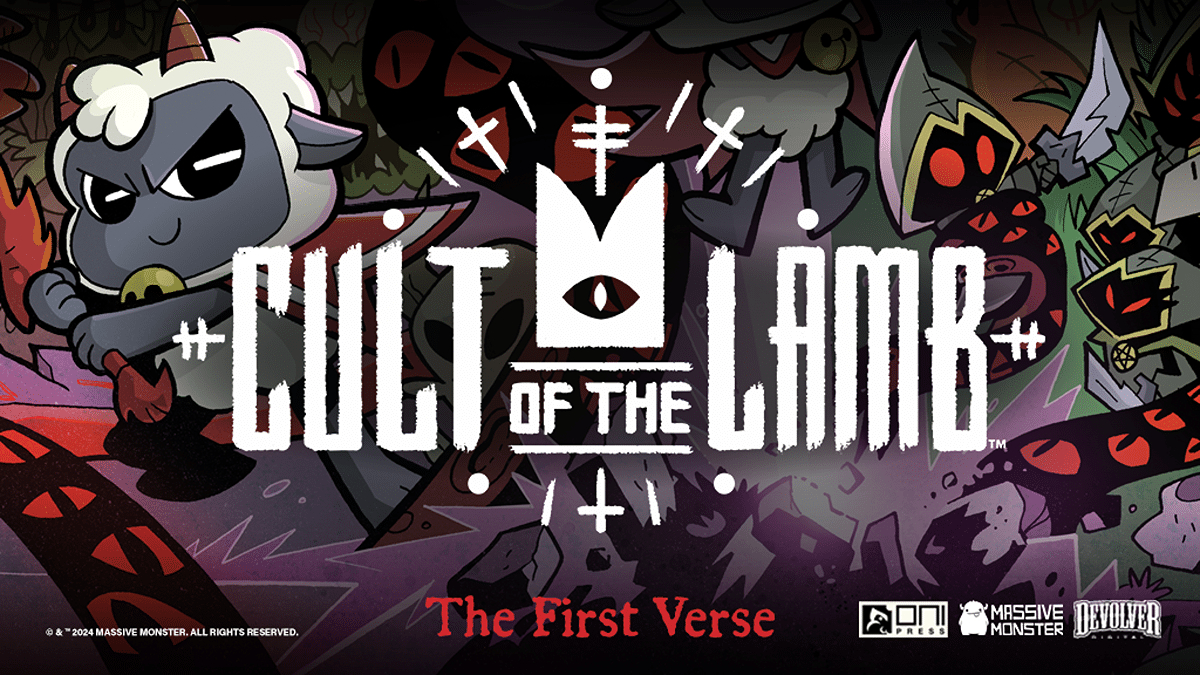Dave Stevens‘ “The Rocketeer” debuted in 1982 in Pacific Comics Starslayer #2 by Stevens and Mike Grell, and the pilot gained such a cult following that in 1991, Disney made The Rocketeer, directed by Joe Johnston and starring Billy Campbell, Jennifer Connelly, Alan Arkin, and Timothy Dalton. To help celebrate The Rocketeer’s 40th Anniversary, the crowdfunding platform Zoop and the estate of Dave Stevens have joined forces to bring fans a project to honor the cartoonist’s legacy, The Rocketeer Comic Puzzle.
There is less than a week left to support The Rocketeer Comic Puzzle Zoop campaign, which has an overall goal of $10,000. In addition to the comic puzzle, supporters can choose from several rewards, including a “Bullseye” art print or t-shirt and a “Cliff’s New York Adventures” art print.
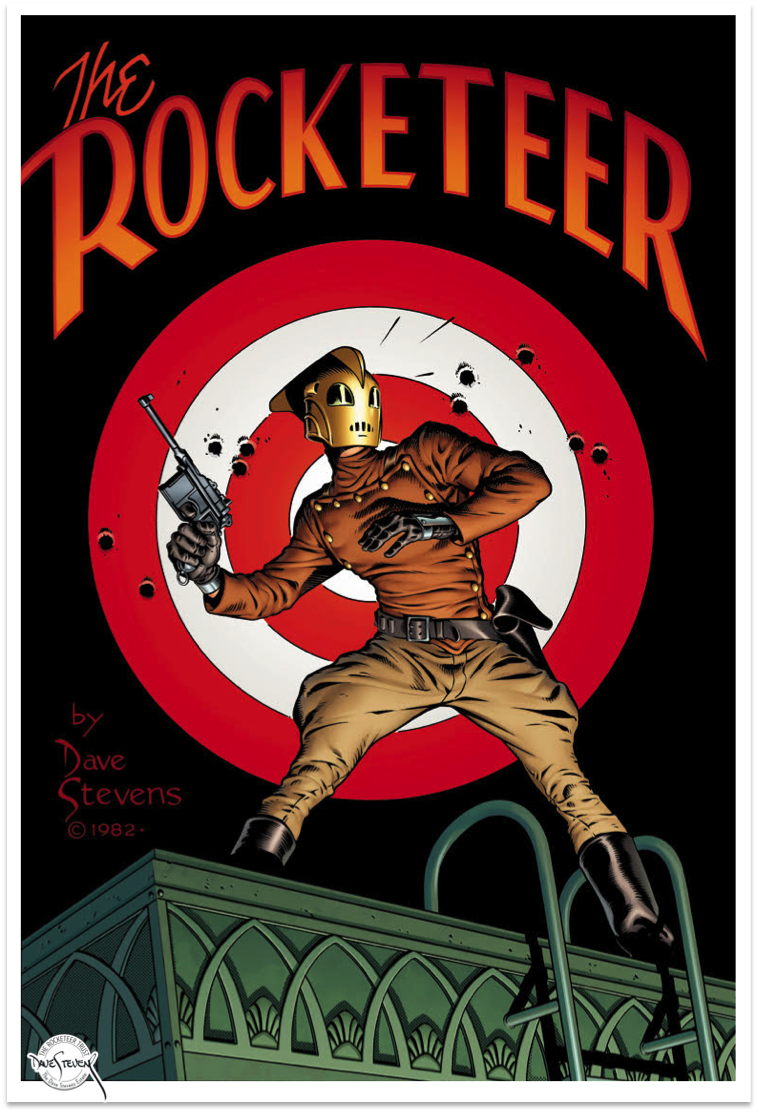
The Beat chatted with Jennifer Bawcum, the sister of Dave Stevens and the trustee for the Rocketeer Trust, “the legal umbrella for all of Dave’s creations, copyrights, trademarks, everything,” about the new crowdfunding campaign.
Rebecca Oliver Kaplan: On ZOOP, you said you “waited a long time to see a Rocketeer puzzle come to fruition.” Can you tell me more about the process of bringing this puzzle to life?
Jennifer Bawcum: A few years back, a German company (Pegasus Spiele) had contacted IDW to subcontract a puzzle for the Europe market. I said to my editor, Scott Dunbier, at IDW, why can’t the US have a Rocketeer Comic Puzzle too? At the time, the company was on board, and we would do it. But we had to put the brakes on. Then, COVID happened: everyone is very hesitant to do anything risky and it was not a project that they wanted to take on, so it was off the table.
IDW and Scott have been a perfect fit for the character. He loves it, which really helps further the character along. He understands the quality that Dave wanted to keep with the character. I think he’s done an outstanding job with it. But, I wanted to do the puzzle right now. I was like, “Okay, who’s going to be able to do this for me? I still want to do it.” I was lamenting to Scott back in November, “That I still wanted to do it.” He said, “Well, I know somebody that might be able to help you.” It was Eric from Zoop. He was from IDW prior to COVID, and I already knew him.
So he called Eric, and we sat down. I told him what I wanted, and he said, “Well, we can do that.” I was like, “Really? It’s that easy?” Yes, it was that easy. Whatever project you want to happen; they can probably make it happen for you. It’s been a very smooth process.
Kaplan: Why did you choose the “Bullseye” art? Why do you think it’s so iconic?
Bawcum: The German puzzle was the “Bullseye” art, making a great puzzle. Just all the different colors that are in it. I love that piece of art. It’s just a fantastic piece. The design is so well done. I can’t explain why it resonates with so many people, but it’s such a great design and a great piece.
I assumed for the longest time that it had been on one of the covers of the comic books. It was actually on the back cover. This iconic piece, and it’s on the back. It’s like, “Why would they do that?” It’s just how it happened.
Kaplan: Can you tell us more about the “Cliff’s New York Adventure” art print?
Bawcum: I think it was an end page to the hardcover graphic novel they did of all the volumes. They had used that end page image at; I believe Dallas Comic-Con for a program, and they made a print, a limited-run print, a long time ago. That’s, I think, pretty much the only place it’s ever been in color.
Kaplan: I saw online that you put the Rocketeer Comic Puzzle together yourself. How hard would you say it is?
Bawcum: It was difficult, but not to where it was frustrating. I was surprised that the hardest part for me was the red and white bullseye striping because I couldn’t bend my mind around it. Some people thought it would be the black part, but I was like, “No, that was actually not.” Maybe the bullseye part would have been a piece of cake for somebody else because that’s how their brain works. It was a good puzzle to put together. I have stopped puzzles before because they drove me crazy and I was so frustrated with them.
Kaplan: Can you tell us any other details about the Zoop campaign that readers might not know?
Bawcum: I can show you the Rocketeer Comic Puzzle. Hopefully, I can keep it. The box is beautiful and glossy and has a magnetic closure. The puzzle comes with this nice mesh bag. The puzzle pieces are a handleable size, not so microscopic they’re frustrating even to handle. My son walked into the room while it was being put together. He’s like, “Wow, that’s a nice puzzle.” He’s not a puzzle person, but he was really impressed.
It’s like poster size. Knock yourself out for people who want to put it together, glue it, and frame it. I just don’t understand that; I want to put it together repeatedly, but it would make a good poster. There was one guy that said he was going to glue one and then keep one to put together and I’m like, “Hey, thanks. That’s cool. That’s a great idea.”
The t-shirt, this is the first time it has been redone since Graffiti Designs put it out in the early to mid-1980s, and that one was an off-white, ivory color with the Rocketeer in the front. They gave me the option between white and black. When I saw the all-black one, and how it just disappeared and all you see is the character popping. It was like, “Oh my gosh, that’s a fantastic effect.” I would not have thought black would work, but it does really well. I’m happy with the way it looks.
Kaplan: What were Dave’s art deco inspirations?
Bawcum: Well, the Griffith Observatory, the whole bottom of the Bullseye Puzzle is him standing on top of a platform at Griffith. It’s all art deco. Dave absolutely loved art deco and that design element, so obviously, he used it a lot.
I know that he always felt that he belonged in a different era: “I should have been born in the ’30s and ’40s because I just love that so much.” That was him—the design elements of the period, he liked the architecture. He had so many books about art deco, anything, but particularly architecture. He gravitated towards anything from the ’30s and ’40s, whether it was cars or trains or planes, anything. He just loved that aesthetic.
Kaplan: The Rocketeer is tied to its time, but it still possesses timeless appeal. Why do you think that is?
Bawcum: Cliff is the everyman. Most men have issues talking to women or their girlfriends or wives, and they screw up. People are jealous. It’s a common drama of every culture and every generation. You put that into a stunning visual… You go, “Oh, I can identify with this or that they said.” I think relationally; they’re very real people.
Kaplan: How was working with the colorist, Laura Martin?
Bawcum: I know that Dave had tapped her for doing all the new coloring whenever that could come about. That was one of his last things before he died, not like on his deathbed thing. A few years prior to his death, he said, “This is who I would prefer to have recolor the whole thing.” He thought she had some great talent, and she did do a phenomenal job. She did a great job on the book. Quite honestly, I didn’t have any dealings with her. It was all IDW. We just got to see the beautiful outcome of it.
A lot of times with the publishing, they’ll be like, “Oh, we have this artist that’s going to do it.” The perfect example is Stephen Mooney and Len O’Grady‘s new Rocketeer comic book, The Rocketeer: The Great Race!, which just came out this month. I was told months ago that this is the guy going to do it. It was like, “Cool, I hope it turns out great.” It has, but that’s not my expertise. I leave it up to them to find the people that are going to do right by the character.
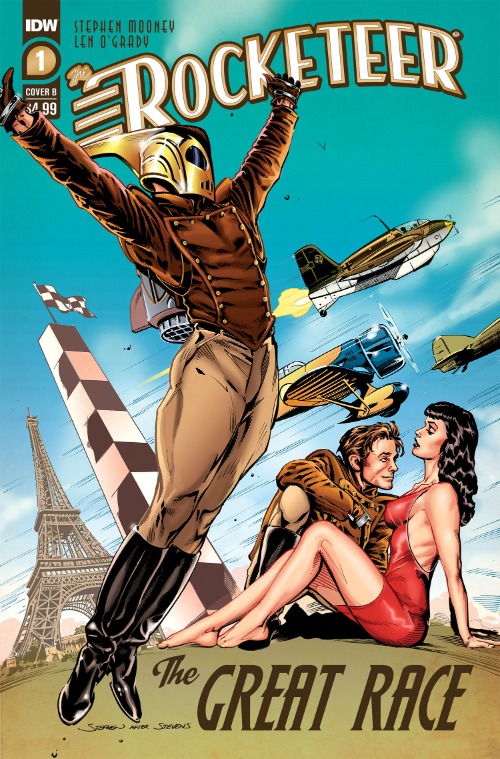
Kaplan: What is The Rocketeer Estate’s role?
Bawcum: I say yes or no? [laughter] They run an idea by me and I go, “Well, that sounds like a great idea.” Most of the time, they are great ideas. I just say, “Run with it.”
Kaplan: Do you think fans have reacted well to the character’s return?
Bawcum: Oh. I think, in some ways, they can’t get enough of The Rocketeer. I think they would probably prefer to have an ongoing story or set of stories, but it’s always a challenge to get the right people to do it with deadlines, and everything else. Hopefully, with this new series, they’ll be able to keep it running a little longer.
Kaplan: Are you still working on the Dave Stevens Documentary?
Bawcum: They are in heavy editing mode right now, and have loosely said summer but are not making any commitments. I cannot wait to see even a preliminary, but they haven’t given me any details yet. I’m super excited. I believe they’re quotes from the documentary in the new comic books.
They gave me a preliminary PDF of the second issue. Kelvin Mao, the director of the documentary, has given a write-up of Dave at the back of the book, and it quotes the documentary. I told Scott, “I will need to wear some waterproof makeup to that premiere because I’m going to be a blubbering mess.”
Kaplan: You must have participated in the documentary, right?
Bawcum: I did, yes. They were here in November to film me. That was four or five hours of interviews. It was a long day, and then they turned around and came to the house to film what they call B-roll, which is all silent. They filmed oodles and oodles of art because they felt it was better to film it live rather than put scans into the documentary. They felt that it would transfer better. They’re doing a very high-end documentary.
I’m thinking, “Okay, what could I say that would not be a giveaway or anything? Well, I will say, when I was born, Dave was like 16 years old, so we had a huge age difference. He was almost parental to me in some ways, but he’d still get down on the floor. I remember one year, I was four, I think, and I got the Weebles Family Tree House. There’s a photo of us, him on the floor with me playing with the Weebles Family Tree House. “Weebles bubble, but they don’t fall down.” That was Dave. He loved to play; he was just a really playful guy. Even up to his last year, he was still that Peter Pan person.
Kaplan: Is there any charity that you’d like to highlight?
Bawcum: Previous issues IDW’s Rocketeer Adventures sent a portion of proceeds to the Hairy Cell Leukemia Foundation, which Dave had. We’re very intentional about sending it directly to Hairy Cell because Leukemia Lymphoma is something completely different that doesn’t fund Hairy Cell, a rare type of leukemia that doesn’t get the funding because nobody gets Hairy Cell. I would say that our leading charity is just strictly Hairy Cell.
I would probably say the second one, which I haven’t promoted or anything, is the Hero Initiative. They aid artists who don’t have health insurance or struggle financially when they’re ill because many artists don’t have or can’t afford their health insurance. Many of these guys are freelance, and they’re up a creek a lot.
Kaplan: Is there anything else you want to share or other good stories?
Bawcum: No, I’m trying not to give away too many stories because I don’t know what all is going to wind up in the documentary, and we want to keep that as under wraps as possible. I’ll show you a cool thing in my dining room. [Holds up Challah drawing.] This was probably made at City College in San Diego. It’s a freaking loaf of bread by Dave, but it’s so real.
It’s super light and in pencil. It’s a loaf of bread. My mom, when Dave died, found it, and was like, “Oh my gosh.” So she framed it. Now it’s in my house. There are all kinds of fun things that I unearth.
I’ve got stacks of fan letters here. The cute thing is sometimes I run across somebody I know. I’ve taken photos with my camera, and e-mailed them, “Look what I just found.” Then, I get a response like, “Oh, my gosh. I forgot that I’d even written him back in 1983.” It’s hilarious.
Support the Rocketeer Comic Puzzle on Zoop until April 27, 2022.


